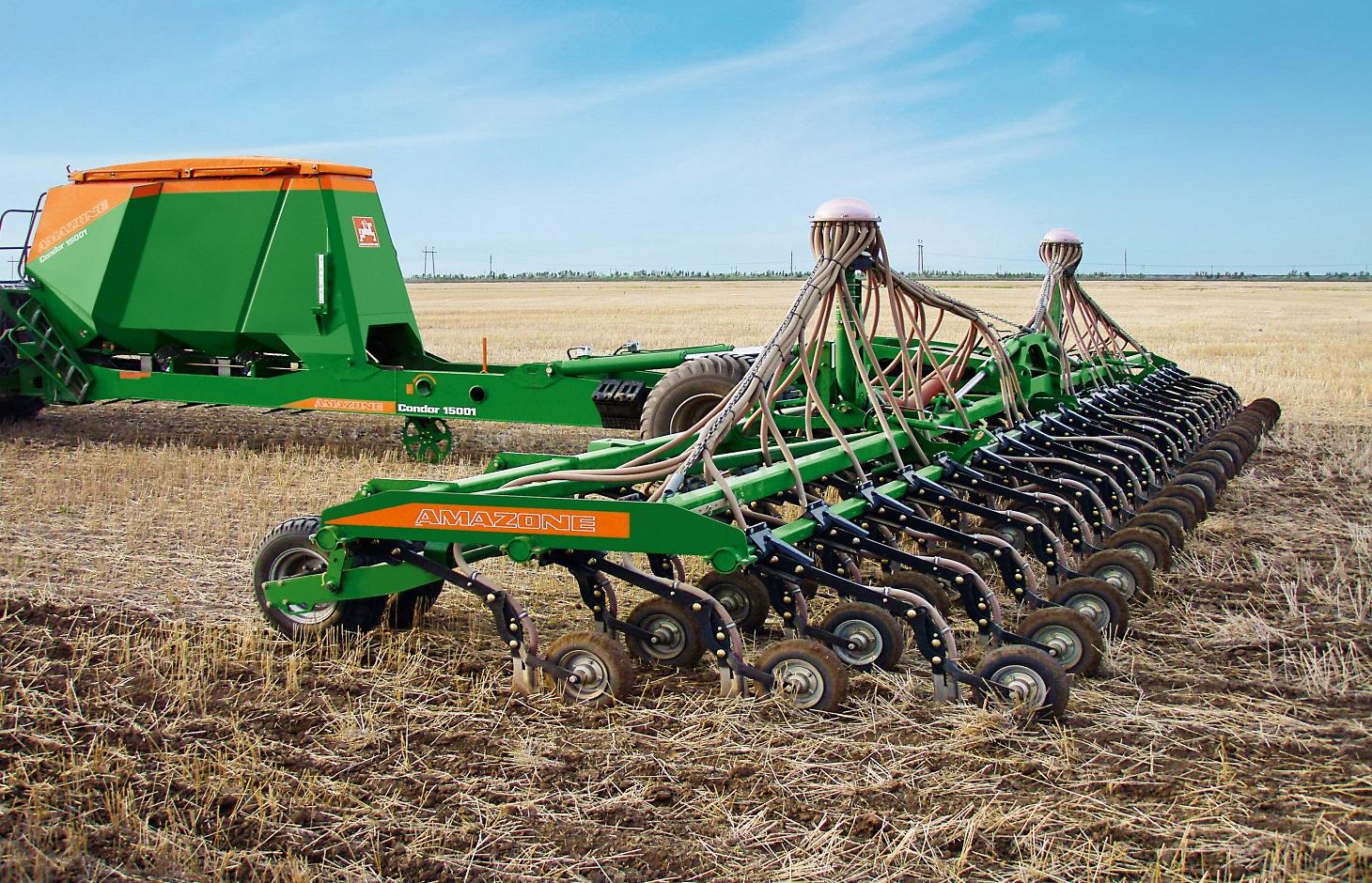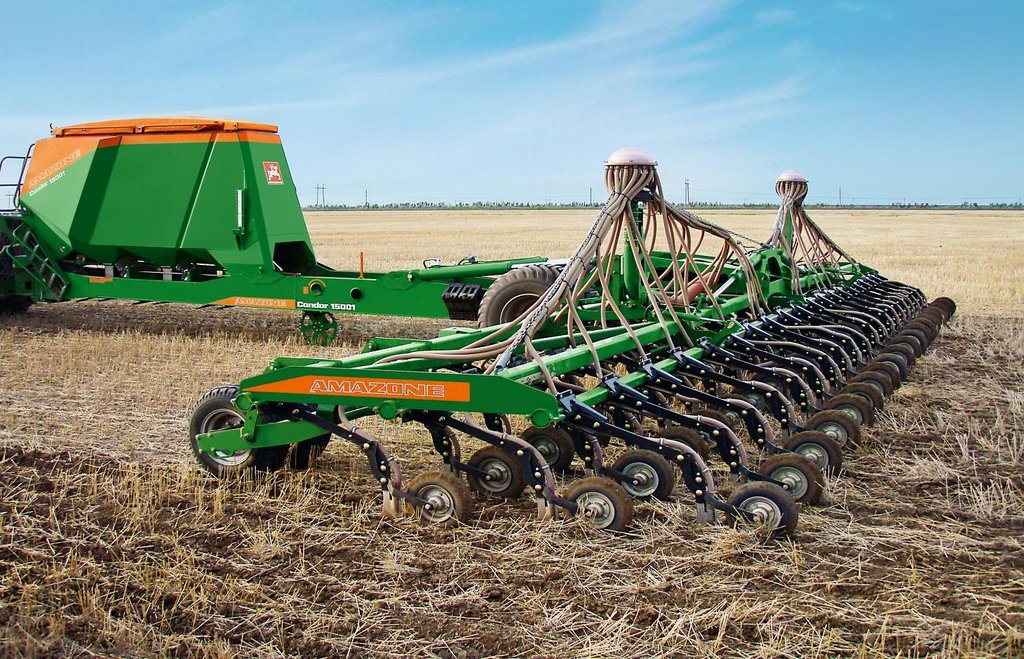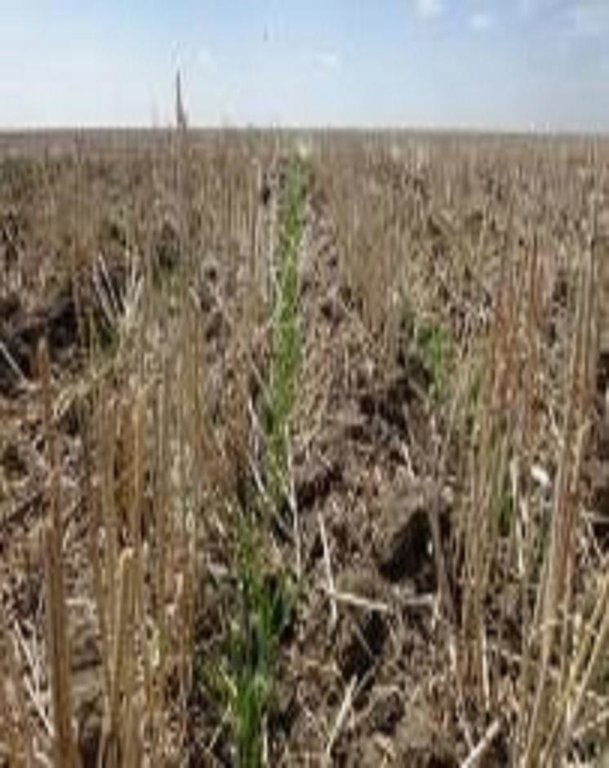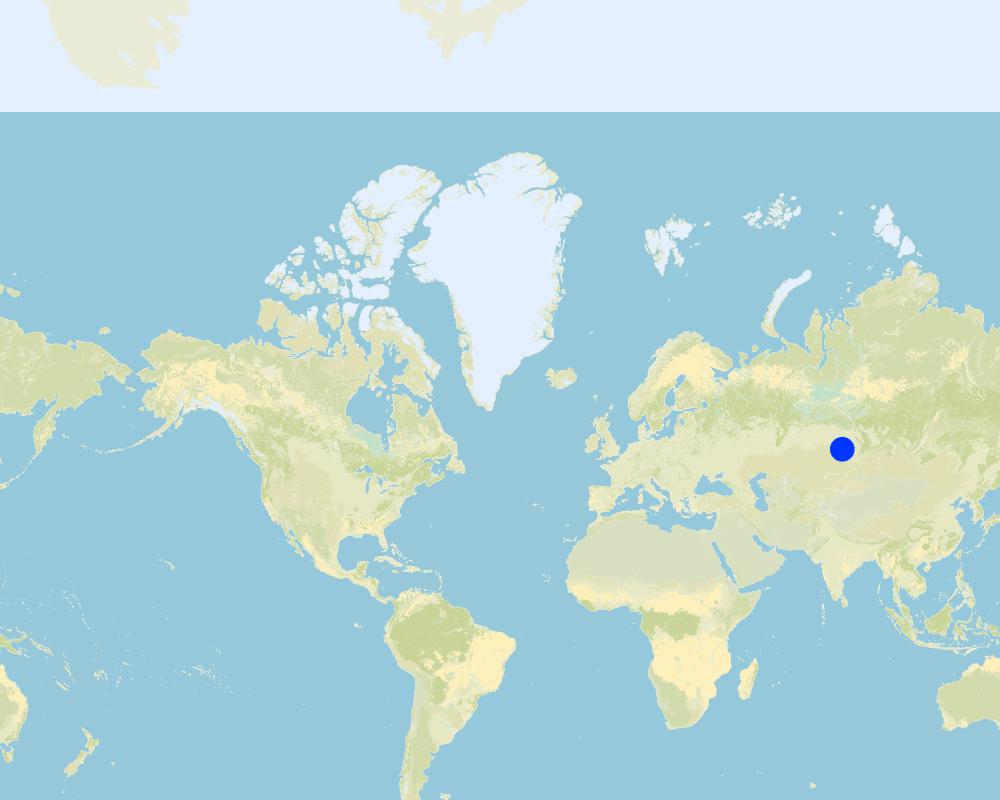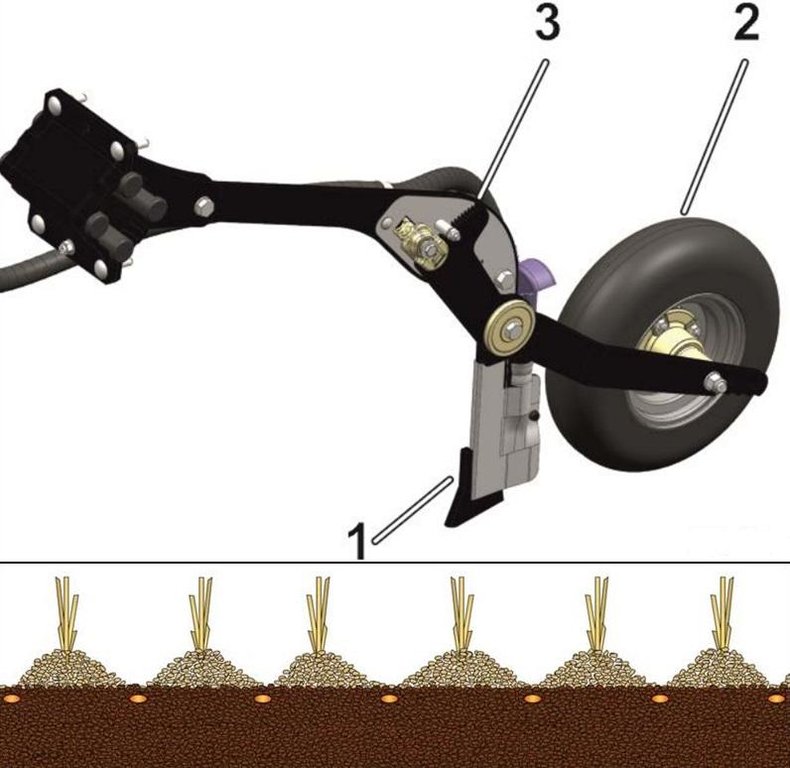No Till [Российская Федерация]
- Создание:
- Обновить:
- Составитель: Peter Liebelt
- Редактор: –
- Рецензенты: Alexandra Gavilano, Deborah Niggli, David Streiff
Нулевая обработка
technologies_1319 - Российская Федерация
Просмотреть разделы
Развернуть все Свернуть все1. Общая информация
1.2 Контактные данные специалистов и организаций, участвующих в описании и оценке Технологии
Название проекта, содействовавшего документированию/оценке Технологии (если применимо)
Book project: Making sense of research for sustainable land management (GLUES)Название проекта, содействовавшего документированию/оценке Технологии (если применимо)
Sustainable land management in the Russian steppes (KULUNDA / GLUES)1.3 Условия, регламентирующие использование данных, собранных ВОКАТ
Составитель и ответственный(-ые) специалист(-ы) согласны с условиями, регламентирующими использование собранных ВОКАТ данных:
Да
1.4 Декларация по устойчивости описываемой Технологии
Вызывает ли описанная здесь Технология проблемы деградации земель настолько, что ее нельзя назвать природосберегающей?
Нет
2. Описание Технологии УЗП
2.1 Краткое описание Технологии
Определение Технологии:
No tillage is based on direct seeding with the innovative/ modern direct seeder Condor and works without any kind of soil disturbance.
2.2 Подробное описание Технологии
Описание:
"No-Till" is a key element of the ‘modern cropping system/ Canadian System’ in the Kulunda steppe. In contrast to minimum tillage an innovative modern direct seeding machine is used. The successful implementation of “No-Till” requires an adaptation of the whole cropping system including crop rotation. Rotation includes a succession of cereal crops (e.g. spring wheat), legumes (peas), and oil seed crops. In the study area predominantly spring cereals are grown. The direct seeder ‘Condor tine seeder’ (Amazone) was used for direct seeding. In contrast to the SZS 2.1 seeder used for minimum tillage it has flexible, individually depth-guided tine coulters, which ensure a high precision of seed placement. When opening the seed furrow, the narrow coulter moves little soil, so that the valuable soil moisture remains in the soil, and there is sufficient fine soil to ensure the optimum seed/ soil contact. Straw is safely cleared from the seed furrow, preventing the "hairpinning-effect" which is the pressing of straw by the coulter into the sowing slit. During the sowing period fertilizers are applied and broad spectrum herbicide in autumn and selective pesticides in the growing season are sprayed which help to increase yield.
No-till works without intensive primary tillage and stubble cultivation that saves time, fuel and reduces soil water evaporation. No-till increases soil aggregate stability, helps to reduce the risk of soil erosion, leads to a higher soil fertility and reduces soil water losses. Weed control through crop rotation and herbicide application allows to omit mechanical weeding and thus to protect the soil against fertility decline and soil water loss. Fertilization becomes more important, because of the decreased mineralization rate under no soil tillage, especially at the beginning of the conversion of the cropping system and until soil organic matter could build up in the soil.
The Technology including crop rotation was tested in the field in 4 test plots with 4 repetitions at the test site in Poluyamki. Results showed that the intensity of soil tillage and seeding methods used had a great influence on crop establishment and expected yields. It was demonstrated that no tillage leads to higher water use efficiency and highest yields. Positive effects were also observed regarding soil structure and soil fertility already after 3 years. Positive effects were also observed regarding soil structure and soil fertility already after 3 years. Minimized soil disturbance led to higher aggregate stability, which leads to a lower risk of wind erosion, increased soil organic carbon storage and soil fertility as well as available soil water content. The Modern Canadian system caused fixed production costs in form of annual depreciation and also additional costs due to the application of fertilizers and pesticides, the prices of which increased in the last four years. Due to not finalised land rights reforms, uncertain credits and harvest insurance farmers are reluctant to invest in new machines.
The test site in Poluyamki is located in the dry steppe of the border region next to Kazakhstan, where, due to the climatic conditions, no natural afforestation occurs, and the planted windbreaks don’t grow vigorously due to the prevailing aridity. The annual precipitation is under 300 mm a year. Probably the greatest climatic influence factor is the precipitation - in terms of quantity and space/ time distribution and, due to high summer temperatures, the high rates of evapotranspiration. The total yearly precipitation rate is the primary yield-limiting factor in all steppe regions. The ratio between precipitation and evaporation is negative. In the late weeks of spring, prolonged droughts must be expected in 5-year cycles, limiting germination and crop establishment. The soils are classed among those of cool-tempered grasslands. Due to their physical and chemical characteristics, these soils (Chernozems and Kastanozems) have high agronomic potential.
2.3 Фотографии, иллюстрирующие Технологию
2.5 Страна/ регион/ места, где применяется Технология, информация о которых собрана в данной Анкете
Страна:
Российская Федерация
Административная единица (Район/Область):
Russian Federation/Altai Krai
Более точная привязка места:
Mikhaylovski district (Pavlovski district, Mamontovski district)
Охарактеризуйте пространственное распространение Технологии :
- равномерно-однородное применение на определенной площади
Если технология равномерно занимает территорию, укажите площадь покрытия (в км2):
0,13
Если точная область неизвестна, укажите приблизительную площадь:
- 0,1-1 км2
Пояснения:
Boundary points of the Technology area: Centre latitude: _52° 4'3.00"N Centre longitude: 79°54'26.16"E Test site Poluyamki
Total area covered by the SLM Technology is 0.13 km2.
The total investigation area of the SLM Technology “Minimum Tillage” refers to our test site areas: 1. Poluyamki, Mikhaylovskiy Rayon: 13ha managed by Minimum Tillage; 2. Pervomayskiy, Mamontovskiy Rayon: 10ha managed by Minimum Tillage; 3. Komsomolskiy, Pavlovskiy Rayon: 3ha.
Map
×2.6 Сколько лет применяется данная Технология
Если год начала применения Технологии достоверно неизвестен, дайте примерную оценку:
- менее 10 лет назад (недавняя)
2.7 Внедрение Технологии
Укажите, как именно Технология УЗП была внедрена:
- в качестве научного/ полевого эксперимента
Пояснения (тип проекта и т.д.):
Since the collapse of the Soviet Union increasingly innovative conservation technologies that are being developed in research experiments are implemented in practice. But the no technology of "No-till" as the most extreme form of conservation tillage is rarely applied in the study area. Thus the tested no-system is highly innovative for the Kulunda steppe.
3. Классификация Технологии УЗП
3.1 Основные цели и задачи реализации Технологии
- повышение производства
- снижение или предотвращение деградации земель, восстановление нарушенных земель
3.2 Текущий(-ие) тип(-ы) землепользования на территории, где применяется Технология

Пахотные угодья и плантации
- Однолетние культуры
Число урожаев за год:
- 1
Поясните:
Longest growing period in days: 110, Longest growing period from month to month: May-October
Пояснения:
Major land use problems (compiler’s opinion): It's the decrease of soil organic carbon content in the soils, topsoil thickness through deflation and soil compaction, which lead to a decrease of soil fertility. Additionally, the negative soil water balance due to the high summer temperatures and evaporation and in addition the high spatial and temporal variability of precipitation as a serious problem relating to the lack of soil water.
Major land use problems (land users’ perception): The land user that we work with and that implement the our new farming practices have a similar opinion relating the land use problems like the research staff of the project. But there are still a lot of farmer, that underestimate the ecological risks of soil degradation resulting from traditional soil management.
3.4 Водоснабжение
Обеспеченность водой участков, где реализуется Технология :
- богарные земли
3.5 Категория УЗП, к которой относится Технология
- Минимальная обработка почв
3.6 Мероприятия УЗП, выполняемые в рамках Технологии

Агрономические мероприятия
- A1: Растительный/ почвенный покров
- A2: Органическое вещество/ почвенное плодородие
- A3: Поверхностная обработка почв
А3: Дифференцируйте системы обработки почв:
A 3.1: Без обработки почвы
Пояснения:
Type of agronomic measures: better crop cover, mulching, green manure, mineral (inorganic) fertilizers, zero tillage / no-till
3.7 Основные проблемы деградации земель, на решение которых направлена Технология

водная эрозия почв
- ВЭп: поверхностная эрозия/смыв верхних почвенных горизонтов

ветровая эрозия почв
- Эп: утрата плодородного слоя почвы
- Эд: дефляция и неравномерная аккумуляция
- Эд: косвенное влияние ветровой эрозии

ухудшение химических свойств почв
- Хп: Снижение плодородия и уменьшение содержания органического вещества (вызванное не эрозией, а другими причинами)
Пояснения:
Main causes of degradation: soil management (Conventional soil tillage by ploughing), crop management (annual, perennial, tree/shrub) (Bare fallow without vegetation cover), Capital for investments (Lack of capital for investment in modern adapted agricultural technologies)
Secondary causes of degradation: wind storms / dust storms (Strong winds and storms - Sukhoveijs - from the southwestern central-Asiatic semi-desert regions cause a higher risk of wind erosion especially on traditional cultivated cropland without plant cover), droughts (The frequently occurring early-summer drought periods are particularly problematic for agricultural production), education, access to knowledge and support services (Need for better know how how to manage no-till systems. Need for more effective measures for knowledge transfer and capacity building.)
3.8 Предотвращение и снижение деградации земель, или восстановление нарушенных земель
Укажите цель Технологии по отношению к деградации земель :
- предотвращение деградации земель
- снижение деградации земель
4. Технические характеристики, мероприятия по практической реализации, вложения и стоимость
4.1 Технический рисунок, иллюстрирующий Технологию
Спецификация (пояснения к техническому рисунку):
The coulter system of the direct seeder Condor based on an individually depth guided tine coulter. When opening the seed furrow, the narrow coulter moves little soil, so that the soil moisture remains in the soil. The accurate depth control and the packer wheel lead to an optimum contact between seed an soil, which is very important especially in dry regions like the Kulunda dry steppe in Poluyamki. 1-Chisel coulter 2- Packer wheel 3-Air diffuser. Illustration: seed grains placed between the former sowing rows
Technical knowledge required for field staff / advisors: high
Technical knowledge required for land users: high
Main technical functions: improvement of topsoil structure (compaction), increase in organic matter, increase of infiltration, increase / maintain water stored in soil, sediment retention / trapping, sediment harvesting, increase of biomass (quantity)
Secondary technical functions: control of raindrop splash, control of dispersed runoff: retain / trap, control of dispersed runoff: impede / retard, control of concentrated runoff: retain / trap, control of concentrated runoff: impede / retard, improvement of surface structure (crusting, sealing), improvement of subsoil structure (hardpan), stabilisation of soil (eg by tree roots against land slides), increase in nutrient availability (supply, recycling,…), reduction in wind speed
Better crop cover
Material/ species: Crop rotation without bare fallow
Green manure
Material/ species: Pea (once in a rotation)
Mineral (inorganic) fertilizers
Material/ species: with calcium ammonium nitrate
Quantity/ density: yearly
Remarks: 100kg/ha (spring wheat and rape), 50kg/ha (pea)
Rotations / fallows
Material/ species: wheat-pea-wheat-rape
Quantity/ density: 4 years
Zero tillage / no-till
Material/ species: Direct seeder Condor (Amazone company)
Автор:
AMAZONE Werke GmbH & Co KG
4.5 Поддержание/ текущее обслуживание
| Деятельность | Сроки/ повторяемость проведения | |
|---|---|---|
| 1. | Direct seeding | Late april/ early may |
| 2. | Fertilizer application | |
| 3. | Pest management | period of vegetation |
| 4. | Harvest | september |
4.6 Стоимость поддержания/ текущего обслуживания ( в год)
| Опишите затраты | Единица | Количество | Затраты на единицу | Общая стоимость на единицу | % затрат, оплаченных землепользователями | |
|---|---|---|---|---|---|---|
| Оплата труда | labour | ha | 1,0 | 4,12 | 4,12 | |
| Оборудование | machine use | ha | 1,0 | 15,96 | 15,96 | |
| Оборудование | fuel | ha | 1,0 | 25,49 | 25,49 | |
| Посадочный материал | seeds | ha | 1,0 | 19,37 | 19,37 | |
| Посадочный материал | seedlings | ha | 1,0 | 30,83 | 30,83 | |
| Удобрения и ядохимикаты | fertilizer | ha | 1,0 | 9,42 | 9,42 | |
| Общая стоимость поддержания Технологии | 105,19 | |||||
| Общие затраты на поддержание Технологии в долларах США | 105,19 | |||||
Пояснения:
Machinery/ tools: Tractor MTS 1221, Tractor Kirovets K 701, Harvester Don 1500, Direct seeder Condor 15001, Sprayer UX 5200
4.7 Наиболее значимые факторы, влияющие на стоимость затрат
Опишите наиболее значимые факторы, влияющие на стоимость затрат:
High initial investment in new machines. Compared to the Traditional Soviet System with conventional deep ploughing without fertilizer application fertilizer and pesticides are the main additional cost factors.
5. Природные и социально-экономические условия
5.1 Климат
Среднегодовое количество осадков
- < 250 мм
- 251-500 мм
- 501-750 мм
- 751-1000 мм
- 1001-1500 мм
- 1501-2000 мм
- 2001-3000 мм
- 3001-4000 мм
- > 4000 мм
Агроклиматическая зона
- полузасушливая
Thermal climate class: temperate
5.2 Рельеф
Склоны (преобладающие):
- пологие (0-2%)
- покатые (3-5%)
- покато-крутые (6-10%)
- крутые (11-15%)
- очень крутые (16-30%)
- чрезвычайно крутые (31-60%)
- обрывистые (>60%)
Формы рельефа:
- плато/ равнины
- гребни хребтов/холмов
- склоны гор
- склоны холмов
- подножья
- днища долин
Зона высотной поясности:
- 0-100 м над уровнем моря
- 101-500 м н.у.м.
- 501-1000 м н.у.м.
- 1001-1500 м н.у.м.
- 1501-2000 м н.у.м.
- 2001-2500 м н.у.м.
- 2501-3000 м н.у.м.
- 3001-4000 м н.у.м.
- > 4 тыс. м н.у.м.
5.3 Почвы
Средняя мощность почв:
- поверхностные (0-20 см)
- неглубокие (21-50 см)
- умеренно глубокие (51-80 см)
- глубокие (81-120 см)
- очень глубокие (> 120 см)
Гранулометрический состав (верхнего горизонта):
- средние фракции (суглинистый, супесчаный)
Содержание органического вещества в верхнем горизонте:
- среднее (1-3%)
5.4 Доступность и качество воды
Уровень грунтовых вод:
5-50 м
5.5 Биоразнообразие
Видовое разнообразие:
- низкое
5.6 Характеристика землепользователей, применяющих Технологию
Рыночная ориентация производства:
- товарное/ рыночное хозяйство
Доходы из других источников:
- < 10% всех доходов
Относительный уровень достатка:
- средний
- весьма обеспеченный
Индивидуальное или коллективное хозяйство:
- использующее наемных работников (компания, государство)
Уровень механизации:
- механизировано/ есть автотранспорт
Пол:
- мужчины
Укажите другие важные характеристики землепользователей:
Land users applying the Technology are mainly Leaders / privileged
Difference in the involvement of women and men: There are generally less woman than men in rural regions caused by rural-urban migration. Furthermore, jobs in the in the field of crop production are not so attractive for woman. Traditionally, much more women work in the field of livestock farming.
Population density: 10-50 persons/km2
Annual population growth: negative
5.7 Средняя площадь земель, используемых землепользователями с применением Технологии
- < 0,5 га
- 0,5-1 га
- 1-2 га
- 2-5 га
- 5-15 га
- 15-50 га
- 50-100 га
- 100-500 га
- 500-1000 га
- 1000-10000 га
- > 10000 га
Считается ли это мелким, средним или крупным хозяйством (по местным масштабам)?
- крупное
5.8 Собственность на землю, права на земле- и водопользование
Землевладелец:
- государственная
- индивидуальная, не оформленная в собственность
Право землепользования:
- общинное (контролируемое)
- аренда
Право водопользования:
- неограниченное (неконтролируемое)
Пояснения:
state: 45%, the data refer to the Altai Krai
5.9 Доступ к базовым услугам и инфраструктуре
медицинское обслуживание:
- плохой
- средний
- хорошая
образование:
- плохой
- средний
- хорошая
технические консультации:
- плохой
- средний
- хорошая
занятость (вне хозяйства):
- плохой
- средний
- хорошая
рынки:
- плохой
- средний
- хорошая
электроснабжение:
- плохой
- средний
- хорошая
транспорт и дорожная сеть:
- плохой
- средний
- хорошая
водоснабжение и канализация:
- плохой
- средний
- хорошая
финансовые услуги:
- плохой
- средний
- хорошая
6. Воздействия и заключительные положения
6.1 Влияние Технологии УЗП в пределах территории ее применения
Социально-экономическое воздействие
Продуктивность
производство сельскозяйственных культур
риск потери продуктивности
Комментарий/ пояснения:
In the first years after the change of the cropping system, there is an increased risk of crop losses due not correct/suitable management of the new cropping system
Доходы и затраты
сельскохозяйственные издержки
Комментарий/ пояснения:
Initial costs, first years for herbicides
доходы хозяйства
Комментарий/ пояснения:
but increase of costs for pesticides and fertilizer, decrease for fuel and labor
Социальное и культурное воздействие
знания в области УЗП/ деградации земель
Комментарий/ пояснения:
in general yes, but food security is not a problem in this region
смягчение конфликтов
contribution to human well-being
Комментарий/ пояснения:
There is a moderate trend towards spontaneous adoption, but this trend depends on different natural and socioeconomic factors, like precipitation or the economic situation and financial power of the farmers
Экологическое воздействие
Водный цикл/ поверхностный сток
сбор воды/ водоудержание
испарение
Почвы
влажность почв
почвенный покров
утрата почв
уплотнение почв
Комментарий/ пояснения:
There is a lower risk for compaction damage than under under traditional ploughing
круговорот/ восполнение питательных веществ
почвенное / подземное органическое вещество/ углерод
Биоразнообразие: растительность, животный мир
полезные виды
Климат и снижение риска стихийных бедствий
выбросы углекислого газа и парниковых газов
скорость ветра
Другие экологические последствия
use of herbicide application
Комментарий/ пояснения:
The no-till system works without mechanical weed control, therefore it must be a chemical weed control especially in the first years of no-till system.
6.2 Влияние Технологии за пределами территории ее применения
доступность воды
Комментарий/ пояснения:
higher content of soil moisture
отложения, переносимые ветром
ущерб прилегающим полям
6.3 Подверженность и чувствительность Технологии УЗП к постепенным изменениям климата и экстремальным погодным явлениям/ стихийным бедствиям, связанным с изменением климата (в понимании землепользователей)
Постепенное изменение климата
Постепенное изменение климата
| Сезон | увеличение или уменьшение | Насколько успешно Технология справляется с этим? | |
|---|---|---|---|
| среднегодовые температуры | увеличилось | хорошо |
Экстремальные явления, связанные с изменением климата (стихийные бедствия)
Погодные стихийные бедствия
| Насколько успешно Технология справляется с этим? | |
|---|---|
| местные ливневые дожди | хорошо |
| местные ураганы | хорошо |
Стихийные бедствия климатического характера
| Насколько успешно Технология справляется с этим? | |
|---|---|
| засухи | хорошо |
Другие воздействия, связанные с изменением климата
Другие воздействия, связанные с изменением климата
| Насколько успешно Технология справляется с этим? | |
|---|---|
| сокращение вегетационного периода | плохо |
6.4 Анализ эффективности затрат
Насколько получаемый результат сопоставим с первоначальными вложениями (с точки зрения землепользователей)?
Эффективность затрат в краткосрочной перспективе:
отрицательно
Эффективность затрат в долгосрочной перспективе:
позитивное
Насколько получаемый результат сопоставим с текущими расходами по поддержанию технологии (с точки зрения землепользователей)?
Эффективность затрат в краткосрочной перспективе:
слабо позитивное
Эффективность затрат в долгосрочной перспективе:
позитивное
6.5 Внедрение Технологии
Пояснения:
100% of land user families have adopted the Technology without any external material support
The 3 farms where we have tested the technology of minimum tillage will partly apply this technology on their farming land. But it must be considered that the test farms of the KULUNDA project were interested in conservation technologies already at the beginning at the project and they are able to invest in new machinery to implement the tested SLM technology, that is not representative for the whole Kulunda-region.
There is a little trend towards spontaneous adoption of the Technology
There is a trend towards spontaneous adoption of the Technology, but this trend depends on different natural and socioeconomic factors like the precipitation or conditions an economic situation of the financial power of the farms. For example the drier the conditions, the more sense is to minimize the tillage. But there is a need to invest in new machinery. In contrast to the Adapted cropping system (with minimum tillage) the modern Canadian system require new seeding machinery that that means high establishment cost. Therefore the implementation growth is not so significant compared to the adapted system that use already existing Soviet seeding machinery.
6.7 Сильные стороны/ преимущества/ возможности Технологии
| Сильные стороны/ преимущества/ возможности по мнению составителя или других ключевых специалистов |
|---|
| Increase of soil aggregate stability and improved soil structure thus better erosion control and protection of soil organic matter will improve soil fertility and water holding capacity |
| Minimization of evaporation losses through better soil cover |
| Lower input costs (materials, fuel, labour, time) and quicker field operations |
6.8 Слабые стороны/ недостатки/ риски Технологии и пути их преодоления
| Слабые стороны/ недостатки/ риски по мнению составителя или ответственных специалистов | Возможные пути их преодоления/снижения? |
|---|---|
| Application of chemical herbicides leads to higher costs and possible ecological risks. | Selective spraying using the “Amaspot” system that is based on infrared detection of weeds. |
| Higher requirements for fertilizers, especially at the beginning, due to lower mineralization rates and less nutrient availability compared to conventional cultivation. | Higher fertilizer application in the first years after conversion. |
| High initial investment costs for buying direct seeders | share machine and costs with other land users. |
7. Справочные материалы и ссылки
7.1 Методы сбора/ источники информации
- выезды на места, полевые обследования
- опросы землепользователей
Ссылки и модули
Развернуть все Свернуть всеСсылки
Нет ссылок
Модули
Нет модулей


